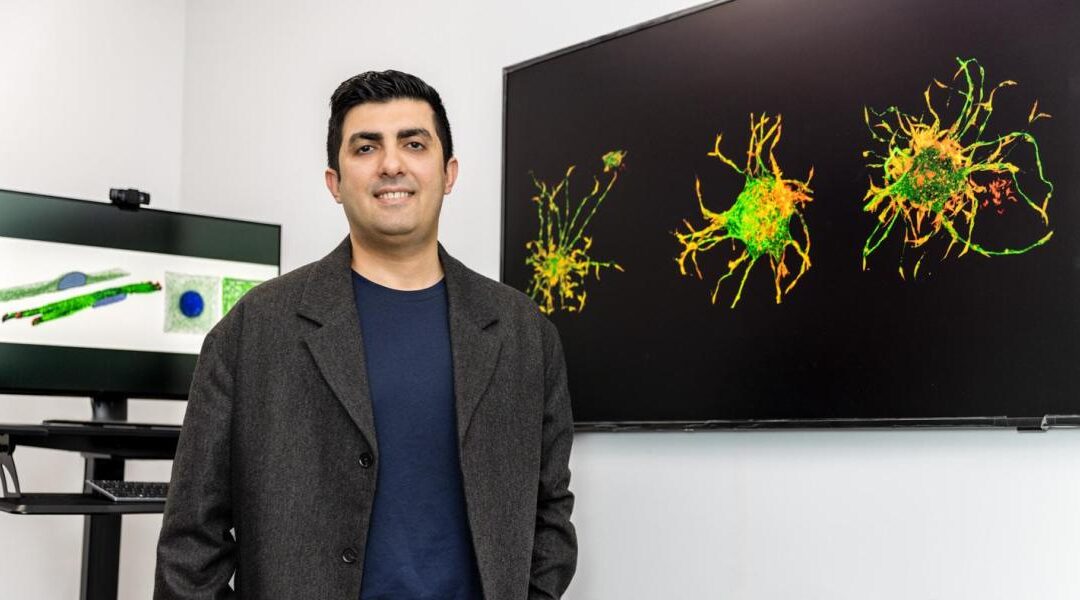Fibroblasts are the body’s building blocks. Among the most abundant human cells, they help form the structure of organs and tissues and hold them together. They are also its repair crew. After an injury, they migrate to the damaged area, cover it with collagen and exert strong forces that bring the edges of the wound together, closing it up.
But these repairs can go awry if their force is not moderated.
“If fibroblasts continue secreting collagen over a wound that’s closed and pulling on the tissue, it can overlap in thick, disorganized layers, which can lead to excessive scarring and diseases such as fibrosis, a condition that can damage organs,” said Farid Alisafaei, director of New Jersey Institute of Technology’s MechanoBiology and BioMechanics Lab. “In the lungs, for example, fibrosis can make it harder to breathe by stiffening lung tissue. In the skin, it can create a microenvironment that promotes skin cancer invasion.”
In a paper published this spring in Nature Materials, Alisafaei and a team of researchers at NJIT and Washington University in St. Louis described their discovery of a biomechanism that may be primarily responsible for the maladaptive response. To read the full story.

